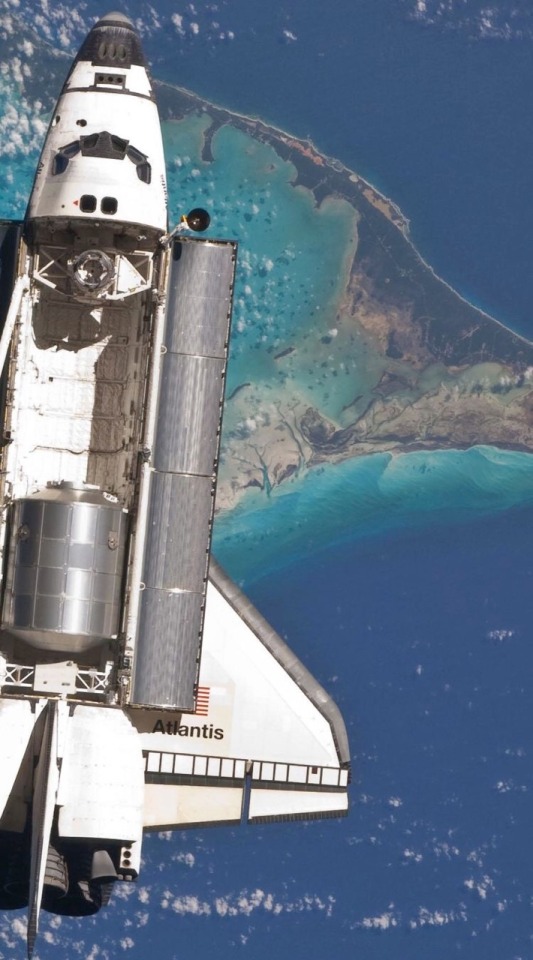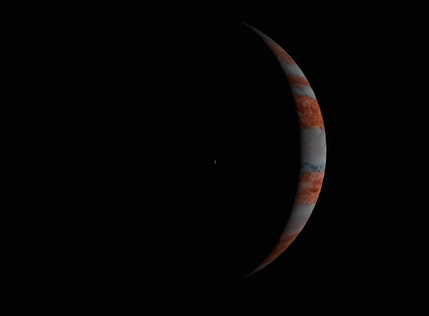The Planets (BBC) - Jupiter And Io









The Planets (BBC) - Jupiter and Io
More Posts from Sergioballester-blog and Others

Shuttle Endeavour’s flight deck. 🚀

Montage of Neptune and Triton by NASA on The Commons
NASA’s Search for Life: Astrobiology in the Solar System and Beyond
Are we alone in the universe? So far, the only life we know of is right here on Earth. But here at NASA, we’re looking.

We’re exploring the solar system and beyond to help us answer fundamental questions about life beyond our home planet. From studying the habitability of Mars, probing promising “oceans worlds,” such as Titan and Europa, to identifying Earth-size planets around distant stars, our science missions are working together with a goal to find unmistakable signs of life beyond Earth (a field of science called astrobiology).
Dive into the past, present, and future of our search for life in the universe.

Mission Name: The Viking Project
Launch: Viking 1 on August 20, 1975 & Viking 2 on September 9, 1975
Status: Past
Role in the search for life: The Viking Project was our first attempt to search for life on another planet. The mission’s biology experiments revealed unexpected chemical activity in the Martian soil, but provided no clear evidence for the presence of living microorganisms near the landing sites.

Mission Name: Galileo
Launch: October 18, 1989
Status: Past
Role in the search for life: Galileo orbited Jupiter for almost eight years, and made close passes by all its major moons. The spacecraft returned data that continues to shape astrobiology science –– particularly the discovery that Jupiter’s icy moon Europa has evidence of a subsurface ocean with more water than the total amount of liquid water found on Earth.

Mission Name: Kepler and K2
Launch: March 7, 2009
Status: Past
Role in the search for life: Our first planet-hunting mission, the Kepler Space Telescope, paved the way for our search for life in the solar system and beyond. Kepler left a legacy of more than 2,600 exoplanet discoveries, many of which could be promising places for life.

Mission Name: Perseverance Mars Rover
Launch: July 30, 2020
Status: Present
Role in the search for life: Our newest robot astrobiologist is kicking off a new era of exploration on the Red Planet. The rover will search for signs of ancient microbial life, advancing the agency’s quest to explore the past habitability of Mars.

Mission Name: James Webb Space Telescope
Launch: 2021
Status: Future
Role in the search for life: Webb will be the premier space-based observatory of the next decade. Webb observations will be used to study every phase in the history of the universe, including planets and moons in our solar system, and the formation of distant solar systems potentially capable of supporting life on Earth-like exoplanets.

Mission Name: Europa Clipper
Launch: Targeting 2024
Status: Future
Role in the search for life: Europa Clipper will investigate whether Jupiter’s icy moon Europa, with its subsurface ocean, has the capability to support life. Understanding Europa’s habitability will help scientists better understand how life developed on Earth and the potential for finding life beyond our planet.

Mission Name: Dragonfly
Launch: 2027
Status: Future
Role in the search for life: Dragonfly will deliver a rotorcraft to visit Saturn’s largest and richly organic moon, Titan. This revolutionary mission will explore diverse locations to look for prebiotic chemical processes common on both Titan and Earth.
For more on NASA’s search for life, follow NASA Astrobiology on Twitter, on Facebook, or on the web.
Make sure to follow us on Tumblr for your regular dose of space!
September 15
This one is technically not yet history, because at the time of posting, the little craft has about half an hour left to go. That said, let’s proceed.
In 2017, NASA’s Cassini space probe ended its twenty-year mission at Saturn. After a nearly-seven-year-long journey there, it orbited the ringed planet for 13 years and just over two months, gathering copious amounts of information about the planet, said rings, and many of its moons. It landed an ESA probe called Huygens on Titan, the first-ever soft landing in the outer Solar System. It discovered lakes, seas, and rivers of methane on Titan, geysers of water erupting from Enceladus (and passed within 50 miles of that moon’s surface), and found gigantic, raging hurricanes at both of Saturn’s poles.
And the images it returned are beautiful enough to make you weep.
On this day in 2017, with the fuel for Cassini’s directional thrusters running low, the probe was de-orbited into the Saturnian atmosphere to prevent any possibility of any contamination of possible biotic environments on Titan or Enceladus. The remaining thruster fuel was used to keep the radio dish pointed towards Earth so the probe could transmit information about the upper atmosphere of Saturn while it was burning up due to atmospheric friction.
This is us at our best. We spent no small amount of money on a nuclear-powered robot, launched it into space, sent it a billion miles away, and worked with it for two decades just to learn about another planet. And when the repeatedly-extended missions were through, we made the little craft sacrifice itself like a samurai, performing its duty as long as it could while it became a shooting star in the Saturnian sky.

Rhea occulting Saturn

Water geysers on Enceladus

Strange Iapetus

Look at this gorgeousness

A gigantic motherfucking storm in Saturn’s northern hemisphere

Tethys

This image is from the surface of a moon of a planet at least 746 million miles away. Sweet lord

Mimas

Vertical structures in the rings. Holy shit

Titan and Dione occulting Saturn, rings visible

Little Daphnis making gravitational ripples in the rings

That’s here. That’s home. That’s all of us that ever lived.

Saturn, backlit

A polar vortex on the gas giant

Icy Enceladus
(All images from NASA/JPL)

Arthur Strengthens, Moves Northward by NASA Goddard Photo and Video
Grid fin hydraulic pump stalled, causing a soft water landing 🚀 POV shot.
Still most likely being reused in a CRS mission 🤘🏻

Shuttle Atlantis over the Bahamas. 🚀

An animation of Jupiter and Io by Nevan
Wow
-
 honeysforskog reblogged this · 1 year ago
honeysforskog reblogged this · 1 year ago -
 shannybangbang liked this · 1 year ago
shannybangbang liked this · 1 year ago -
 damon-axel-salvatore liked this · 1 year ago
damon-axel-salvatore liked this · 1 year ago -
 theadlertag liked this · 1 year ago
theadlertag liked this · 1 year ago -
 fullofnightnoises reblogged this · 1 year ago
fullofnightnoises reblogged this · 1 year ago -
 rh35211 reblogged this · 2 years ago
rh35211 reblogged this · 2 years ago -
 lucumstain liked this · 2 years ago
lucumstain liked this · 2 years ago -
 paranoicbot liked this · 2 years ago
paranoicbot liked this · 2 years ago -
 goolden reblogged this · 2 years ago
goolden reblogged this · 2 years ago -
 averagemrfox reblogged this · 2 years ago
averagemrfox reblogged this · 2 years ago -
 dreamsong235 reblogged this · 2 years ago
dreamsong235 reblogged this · 2 years ago -
 dreamsong235 liked this · 2 years ago
dreamsong235 liked this · 2 years ago -
 mollywall-e liked this · 2 years ago
mollywall-e liked this · 2 years ago -
 nerd-spikey reblogged this · 2 years ago
nerd-spikey reblogged this · 2 years ago -
 nerd-spikey liked this · 2 years ago
nerd-spikey liked this · 2 years ago -
 slay-this reblogged this · 2 years ago
slay-this reblogged this · 2 years ago -
 thesanctuarysystem reblogged this · 2 years ago
thesanctuarysystem reblogged this · 2 years ago -
 broken-beat-and-scarred reblogged this · 2 years ago
broken-beat-and-scarred reblogged this · 2 years ago -
 hg807 liked this · 2 years ago
hg807 liked this · 2 years ago -
 lubean-skywalker liked this · 2 years ago
lubean-skywalker liked this · 2 years ago -
 adrix1302 liked this · 2 years ago
adrix1302 liked this · 2 years ago -
 starryrosebud liked this · 2 years ago
starryrosebud liked this · 2 years ago -
 rogue205 reblogged this · 2 years ago
rogue205 reblogged this · 2 years ago -
 justavaullt reblogged this · 2 years ago
justavaullt reblogged this · 2 years ago -
 josilverdragon liked this · 2 years ago
josilverdragon liked this · 2 years ago -
 zjofierose reblogged this · 2 years ago
zjofierose reblogged this · 2 years ago -
 kitsunalunaa liked this · 2 years ago
kitsunalunaa liked this · 2 years ago -
 bluemere reblogged this · 2 years ago
bluemere reblogged this · 2 years ago -
 coyotex liked this · 2 years ago
coyotex liked this · 2 years ago -
 souryoukomi reblogged this · 2 years ago
souryoukomi reblogged this · 2 years ago -
 souryoukomi liked this · 2 years ago
souryoukomi liked this · 2 years ago